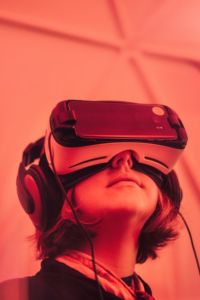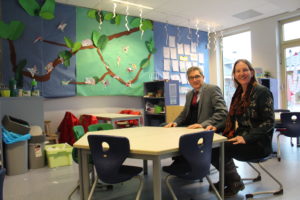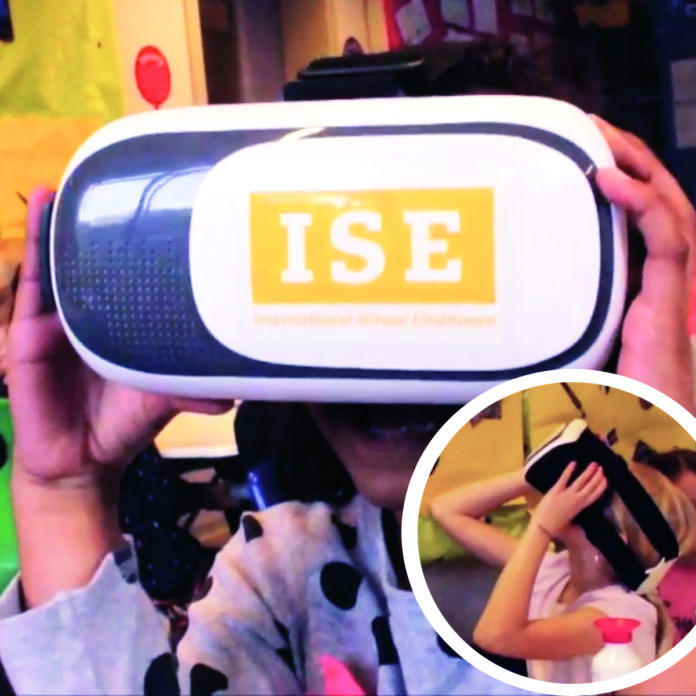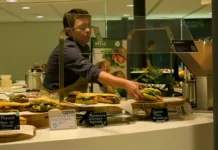Technology is revolutionising learning and teaching. Although this has been the vision for education for many decades, today the dream has become reality.
To see this for yourself, just visit this month’s BETT Expo in London, or ISTE later this year in Philadelphia, and try on a pair of virtual reality goggles. You may have the opportunity to ‘travel’ to a WWI trench or to examine the aorta and valves of a beating human heart. As you slowly move around in the virtual world, you will likely begin to feel that you are not simply an observer, but a participant in this new world.
For those of us who may have studied with the aid of black and white photographs in a textbook, these new technologies do indeed offer a revolution in learning. In fact, according to Laura Landers, Leader for learning at the International School Eindhoven, “Today’s students no longer have to be content with being distant observers of the world nor attempt to make sense of history from a small number of surviving objects or documents. With virtual reality, they can now experience these worlds for themselves.”

Personalised learning:
Twenty-first-century students can design, construct, and program their own robots. They can use games, simulations and software designed specifically to personalise their learning experience. Just imagine how much faster you could learn if the software was available to create a unique learning pathway based on your own responses and your own interests?
In the past, even modest versions of these technologies would have been prohibitively expensive or simply not technologically feasible. However, according to Jeroen van Keulen, a presenter at the BETT exposition, ‘If you walk through the exhibits you will have a chance to see technologies that only a short time ago were considered science fiction’.
For an example, just visit the booth of Century Intelligent Learning (London). They will be able to show you their latest educational software, which uses artificial intelligence to direct students along a personalised learning pathway.
The potential for change is enormous:
In 2018, there were over 35 thousand visitors who attended the BETT Exposition. With other such gatherings taking place around the world, and so many teachers in attendance, the potential for change is massive.
For those parents, teachers, and politicians who are interested in understanding how the changing nature of technology will affect young people, these expositions are worth a visit.
If you decide to go, you may notice that the company now at the fore of training, hardware and other services to schools is a company called Google for Education. They began a few years ago providing schools with a free email service and cloud storage. Today this company also provides not only an inexpensive laptop but specialist training for teachers in the most advanced technological-related areas such as augmented and virtual reality.

Implications for this brave new world:
While schools are certainly happy to enjoy such free training and reductions in costs, there are a few notes of caution.
Firstly, it is important for everyone to understand that the changes in education are a sign of an even greater social change that is upon us. The World Economic Forum suggests that we are in fact advancing through a ‘’Fourth Industrial Revolution”, and that this:
“…technological revolution […] will fundamentally alter the way we live, work, and relate to one another. In its scale, scope, and complexity, the transformation will be unlike anything humankind has experienced before”.
We should therefore not be too surprised to see technologies transforming learning and teaching in our schools. However, we may need to consider which skills, knowledge and attributes our students will need within this latest industrial revolution.
We must not change our curriculum nor methods of instruction simply because we have the technology to do so. Instead, we must change only if by doing so our students will learn more efficiently, and be better prepared for this brave new world that is upon us.
Secondly, we must ensure that children are not left behind. It may be easy to imagine how students within a high-tech region such as the Netherlands Brainport, will have access to these new technologies and approaches to learning, but we must also ensure that all children across the globe can benefit.
Otherwise, according to the World Economic Forum, we risk increasing economic disparity. At a time when world politics has already become quite fractious, these economists argue that any continuing “…gradual erosion of our shared obligation to progress more equitably…” will only heighten the potential for greater conflict.

Summary:
This Fourth Industrial Revolution is certainly transforming the way we live and learn. These amazing new technologies, as demonstrated at expos such as BETT, will help to ensure the teaching and learning will be more effective than at any time in human history. However, whilst we leverage the power of these new tools in our own schools, we must not lose sight of needs of the global community and consider how best to use technology to build consensus and equality.
Roy White,
Director, International School Eindhoven
















